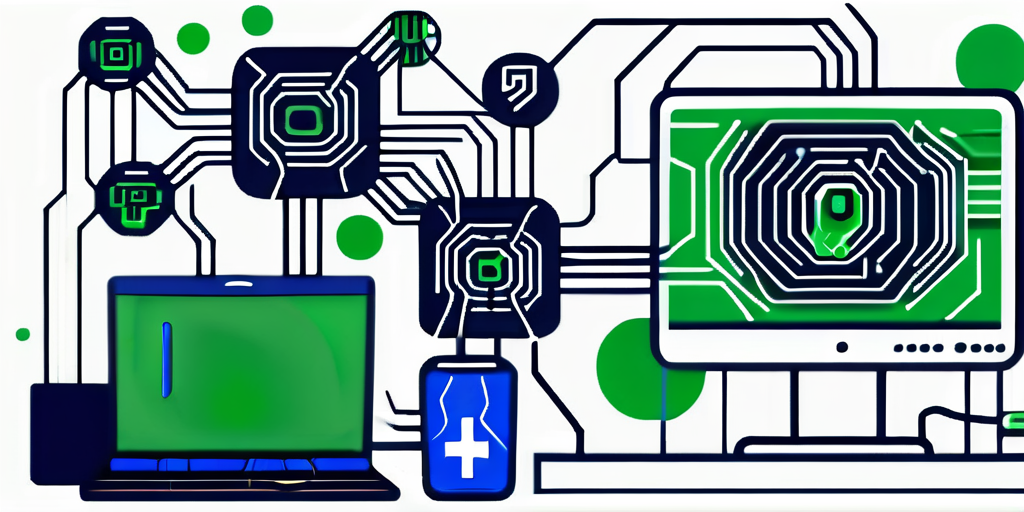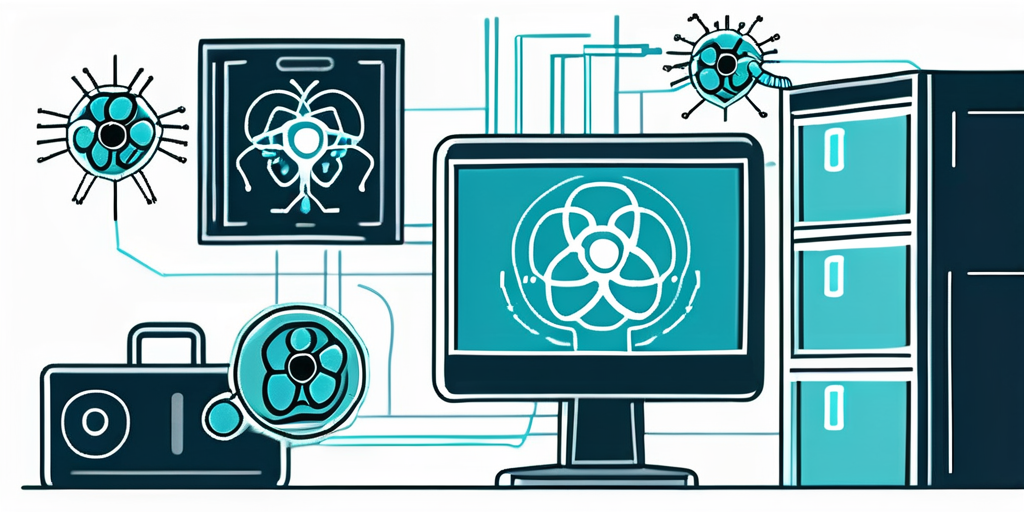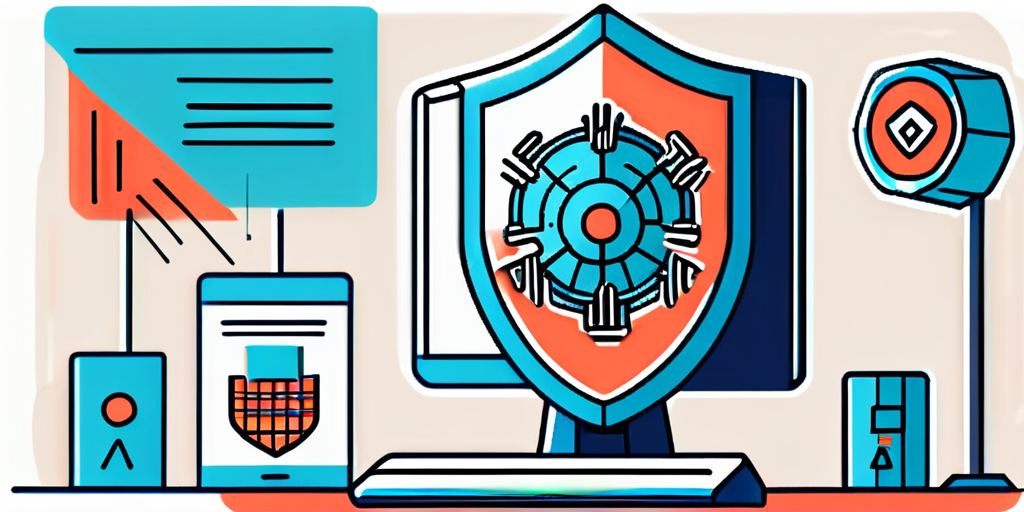In recent years, the healthcare industry has become a prime target for cybercriminals due to the vast amount of sensitive patient data it holds. As technology continues to advance, so do the tactics employed by hackers. One such emerging threat is the Kwampirs Trojan, a sophisticated malware that is causing significant concern within the healthcare community.
Understanding the Kwampirs Trojan
The Kwampirs Trojan, also known as Orangeworm, is a highly persistent and stealthy malware that primarily targets the healthcare sector. This malicious software is capable of infiltrating computer systems, stealing valuable data, and remaining undetected for extended periods. To fully comprehend the threat it poses, it is crucial to delve into the origin and development of this advanced cyber weapon.

Origin and Development of the Kwampirs Trojan
The Kwampirs Trojan first emerged in 2015 and has since evolved into a formidable threat to the healthcare industry. Its primary purpose is to gain unauthorized access to computer networks and gather sensitive information, including patient records, medical research, and intellectual property.
The developers behind the Kwampirs Trojan have demonstrated a deep understanding of healthcare technology infrastructure, exploiting vulnerabilities to bypass security measures. Their sophisticated techniques have led security experts to believe that the creators have significant knowledge of medical systems and networks.
One possible theory about the origin of the Kwampirs Trojan is that it was developed by a group of hackers who had previously targeted the healthcare sector. These hackers may have recognized the value of medical data and sought to exploit it for financial gain or other malicious purposes. Another theory suggests that the Trojan was created by a nation-state actor seeking to gain a strategic advantage by compromising the healthcare systems of rival countries.
Regardless of its origin, the development of the Kwampirs Trojan involved a significant amount of time and effort. The creators had to identify vulnerabilities in healthcare systems, develop the necessary code to exploit those vulnerabilities, and ensure that the malware remained undetectable by security software. This level of sophistication indicates that the developers possessed advanced programming skills and a deep understanding of cybersecurity.
Technical Overview of the Kwampirs Trojan
The Kwampirs Trojan employs a variety of techniques to infiltrate and remain hidden within healthcare networks. It typically infects systems through phishing emails containing malicious attachments or by exploiting vulnerabilities in outdated software.
Once it gains access to a network, the malware begins its stealthy operation. It spreads laterally, compromising connected systems and devices, leaving a trail of infected endpoints. Its persistence allows it to remain undetected, making it challenging to eradicate, even with robust security measures in place.
One of the key features of the Kwampirs Trojan is its ability to evade detection by antivirus software. It achieves this by using advanced obfuscation techniques, encrypting its code, and frequently updating itself to avoid signature-based detection. Additionally, the malware is capable of disabling or bypassing security controls, making it even more difficult to detect and remove.
Another notable aspect of the Kwampirs Trojan is its use of command-and-control (C2) infrastructure. This infrastructure allows the malware to communicate with its operators, receive instructions, and exfiltrate stolen data. The C2 servers are often located in multiple jurisdictions, making it challenging for law enforcement agencies to shut them down.
Furthermore, the Kwampirs Trojan has the ability to remain dormant for extended periods, only activating when specific conditions are met. This feature allows the malware to evade detection during routine security scans and increases its chances of successfully infiltrating and exfiltrating data from targeted systems.
Overall, the Kwampirs Trojan represents a significant threat to the healthcare sector. Its advanced techniques, persistence, and ability to remain hidden make it a formidable adversary. To combat this malware effectively, organizations must implement robust cybersecurity measures, regularly update their software, educate employees about phishing attacks, and maintain a proactive approach to threat detection and response.
The Kwampirs Trojan’s Impact on the Healthcare Industry
The Kwampirs Trojan poses severe risks and damages to the healthcare industry, affecting organizations on multiple fronts. Understanding these potential consequences is crucial for developing effective strategies to mitigate the threat.

The healthcare industry, with its critical role in safeguarding patient health and well-being, has become a prime target for cybercriminals. The Kwampirs Trojan, with its sophisticated capabilities, has the potential to wreak havoc within healthcare organizations, causing significant harm to patients, providers, and the industry as a whole.
Potential Risks and Damages
One of the major risks associated with the Kwampirs Trojan is the compromise of patient data privacy. The theft of sensitive information can have severe repercussions, putting individuals at risk of identity theft and fraud. Imagine the devastating consequences of personal medical records falling into the wrong hands. Not only would patients’ financial security be at stake, but their physical well-being could also be compromised if the stolen data is used to manipulate their medical history or treatment plans.
Furthermore, the exposure of medical research and intellectual property may have detrimental effects on companies, potentially leading to financial losses and an erosion of trust. The healthcare industry heavily relies on innovation and research to develop new treatments and improve patient care. Any breach of this valuable intellectual property can hinder progress, stifle innovation, and ultimately harm patients who depend on cutting-edge medical advancements.
Moreover, the shutdown of critical healthcare systems can result in disrupted operations, compromising patient care and potentially endangering lives. The Kwampirs Trojan’s ability to spread across networks increases the likelihood of widespread system failure, causing chaos within healthcare organizations. Imagine the chaos that would ensue if vital medical equipment, such as life-support machines or medication dispensing systems, were suddenly rendered inoperable due to a cyberattack. Lives would hang in the balance, and healthcare providers would be left scrambling to find alternative solutions.
Why the Healthcare Industry is a Target
The healthcare industry possesses a trove of valuable data, making it an attractive target for cybercriminals. Patient records contain personal information, including social security numbers, addresses, and financial details, making them highly sought after on the black market. This valuable data can be used for various malicious purposes, such as identity theft, insurance fraud, or even blackmail.
Additionally, medical research and intellectual property hold immense value for competitors or nation-state actors. The race to develop groundbreaking treatments and medical breakthroughs is highly competitive, and the theft of valuable research data can give a significant advantage to those who obtain it illicitly. This not only undermines the efforts of healthcare organizations but also poses a threat to public health by impeding progress in finding cures for diseases and improving healthcare outcomes.
Furthermore, healthcare organizations often face budget constraints when it comes to updating their technology infrastructure and implementing robust security measures. This makes them particularly vulnerable to attacks like the Kwampirs Trojan, which exploits known vulnerabilities in outdated systems. The healthcare industry’s focus on patient care often means that cybersecurity takes a backseat, leaving organizations exposed to increasingly sophisticated cyber threats.
In conclusion, the Kwampirs Trojan’s impact on the healthcare industry is far-reaching and potentially devastating. From compromising patient data privacy to disrupting critical healthcare systems, the consequences of this Trojan’s infiltration are severe. It is imperative for healthcare organizations to prioritize cybersecurity measures, invest in modern technology infrastructure, and stay vigilant against evolving cyber threats to protect patient well-being and the integrity of the industry.
Mitigation Strategies Against the Kwampirs Trojan
The healthcare industry must take proactive measures to protect itself against the growing threat of the Kwampirs Trojan. By implementing a combination of preventative and responsive strategies, organizations can significantly reduce their risk and minimize potential damages.

The Kwampirs Trojan, a sophisticated malware that specifically targets healthcare organizations, poses a significant threat to the confidentiality, integrity, and availability of sensitive patient data. To combat this threat effectively, healthcare organizations must adopt best practices for prevention and establish robust response and recovery measures.
Best Practices for Prevention
Effective prevention starts with education and awareness training for employees. Staff members must understand the risks associated with phishing emails and the importance of regularly updating software to fix known vulnerabilities.
Additionally, healthcare organizations should invest in robust endpoint protection systems, intrusion detection systems, and firewalls. These security measures can actively monitor network traffic and identify potential threats, preventing the infiltration of the Kwampirs Trojan.
Furthermore, implementing a strong password policy and multi-factor authentication can add an extra layer of security to prevent unauthorized access to critical systems and sensitive data. Regular security audits and vulnerability assessments should also be conducted to identify and address any weaknesses in the organization’s infrastructure.
Response and Recovery Measures
In the unfortunate event of a successful Kwampirs Trojan attack, healthcare organizations must have a comprehensive incident response plan in place. This plan should include regular backups of critical data, ensuring that data loss is minimized. Regular testing of restoration procedures is vital to ensure the rapid recovery of systems.
Furthermore, organizations should establish strong partnerships with cybersecurity companies that specialize in healthcare. These partnerships can provide ongoing support, threat intelligence, and assistance in dealing with the aftermath of an attack. Collaborating with these experts can help healthcare organizations stay ahead of evolving threats and ensure a swift and effective response.
Moreover, it is crucial for healthcare organizations to maintain open lines of communication with relevant regulatory bodies and law enforcement agencies. Reporting incidents promptly can help facilitate investigations and potentially lead to the apprehension of the perpetrators.
Additionally, conducting post-incident analysis and implementing lessons learned is essential for continuous improvement. This analysis can help identify any gaps in the organization’s security posture and inform future prevention and response strategies.
In conclusion, the threat of the Kwampirs Trojan demands a comprehensive and multi-faceted approach to cybersecurity in the healthcare industry. By prioritizing prevention, establishing robust response and recovery measures, and fostering partnerships with cybersecurity experts, healthcare organizations can effectively mitigate the risks associated with this malicious malware.
Future Implications of the Kwampirs Trojan
As the Kwampirs Trojan continues to evolve, healthcare organizations must prepare for the future implications it may bring. Understanding the potential evolution and long-term effects of this malware is vital for staying one step ahead in the ongoing battle against cyber threats.
Predicted Evolution of the Trojan
Security experts anticipate that the Kwampirs Trojan will continue to adapt and evolve, becoming even more sophisticated in its techniques. As healthcare organizations implement stronger security measures, cybercriminals will likely develop innovative ways to bypass defenses. This ongoing cycle of attack and defense underscores the need for constant vigilance and investment in robust cybersecurity strategies.
One possible direction for the evolution of the Kwampirs Trojan is the integration of artificial intelligence (AI) capabilities. By leveraging AI, the malware could become more adept at evading detection by analyzing patterns in network traffic and adapting its behavior accordingly. This could pose significant challenges for healthcare organizations, as traditional security solutions may struggle to keep up with the rapidly evolving threat landscape.
Another potential evolution of the Kwampirs Trojan is the incorporation of zero-day exploits. Zero-day exploits refer to vulnerabilities in software that are unknown to the software vendor and, therefore, have no available patch. By leveraging zero-day exploits, the malware could infiltrate healthcare systems without detection, making it even more difficult to detect and mitigate the threat.
Long-term Effects on Healthcare Cybersecurity
The emergence of the Kwampirs Trojan has served as a wakeup call for the healthcare industry, highlighting the urgent need to prioritize cybersecurity. Healthcare organizations must shift their approach from reactive to proactive, investing in advanced technologies and fostering a culture of cybersecurity awareness.
One of the long-term effects of the Kwampirs Trojan on healthcare cybersecurity is the increased focus on employee training and education. Healthcare organizations are recognizing the importance of equipping their staff with the knowledge and skills to identify and respond to potential cyber threats. Regular training sessions, simulated phishing exercises, and awareness campaigns are becoming common practices to enhance the overall cybersecurity posture of healthcare organizations.
Collaboration among healthcare providers, cybersecurity experts, and government regulatory bodies is crucial in developing comprehensive cybersecurity frameworks and sharing threat intelligence. Only through collective efforts can the industry effectively combat the Kwampirs Trojan and other emerging threats.
Furthermore, the long-term effects of the Kwampirs Trojan are also driving the adoption of advanced security technologies. Healthcare organizations are investing in next-generation firewalls, intrusion detection and prevention systems, and advanced threat intelligence platforms. These technologies provide enhanced visibility into network traffic, detect anomalies, and enable proactive threat hunting, strengthening the overall cybersecurity defenses of healthcare organizations.
As the healthcare industry moves forward, it must remain committed to staying ahead of cybercriminals, constantly adapting and strengthening its cybersecurity defenses. By prioritizing the protection of patient data and investing in robust security measures, the industry can safeguard its critical operations and maintain the trust and confidence of patients.
As the Kwampirs Trojan continues to pose a significant threat to the healthcare industry, the need for robust cybersecurity measures has never been more critical. Blue Goat Cyber, a Veteran-Owned business, is at the forefront of providing comprehensive B2B cybersecurity services tailored to the unique needs of the medical sector. From medical device cybersecurity and penetration testing to HIPAA and FDA compliance, our team is dedicated to protecting your organization against sophisticated cyber threats. Don’t wait until it’s too late—contact us today for expert cybersecurity assistance and ensure your patient data and healthcare operations are secure.
